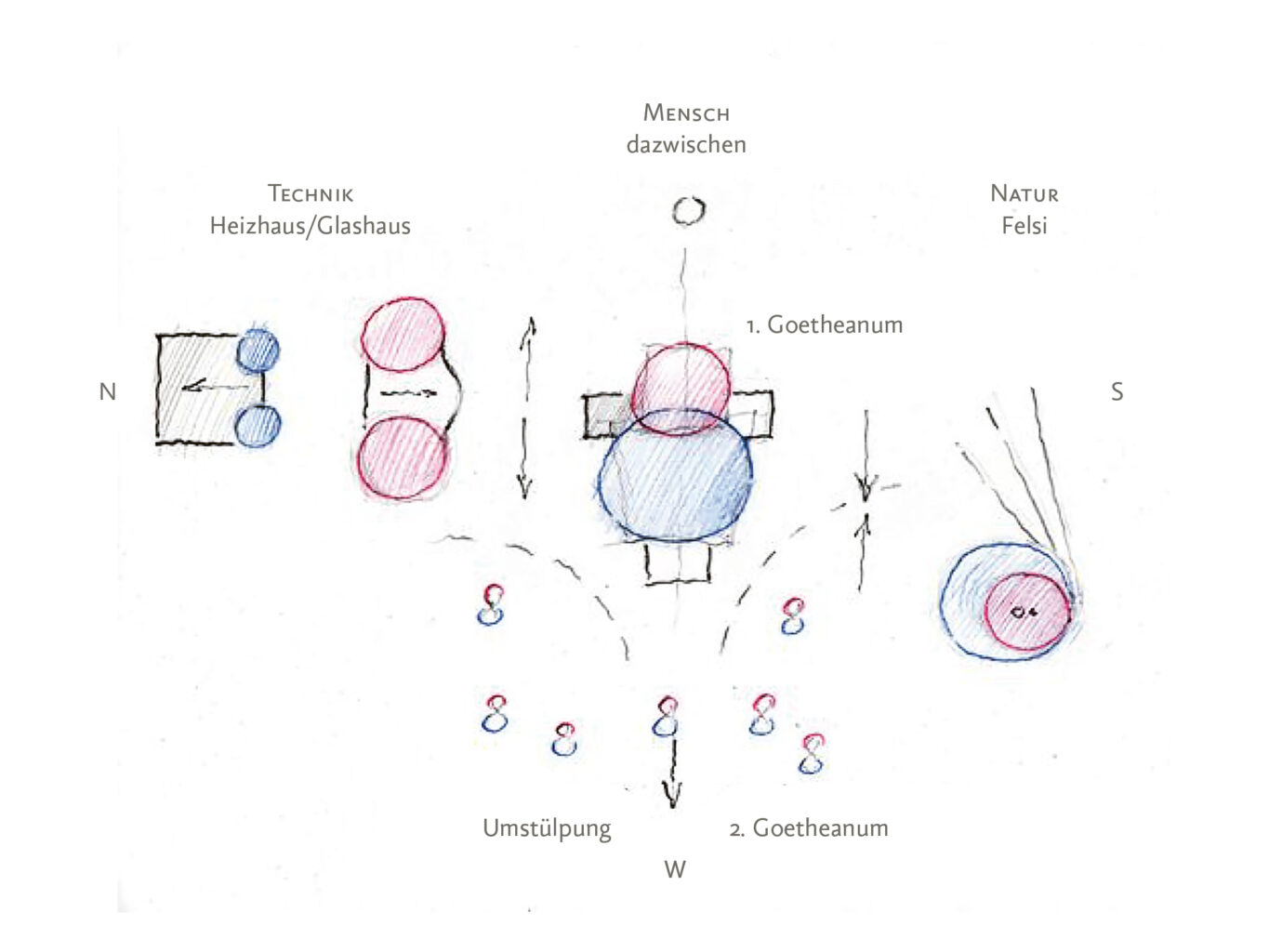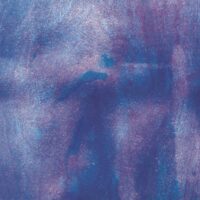From October 6th to 9th, at the fall conference of the Natural Sciences Section at the Goetheanum, polarities in human beings became the subject of joint research. The discussions revolved around the polarity of inner life and external knowledge, as well as the polarity of nature and technology and thus between supernature and sub-nature.
«In the rhythm of waking and sleeping, we all feel an interweaving of the two poles.» With this note, Johannes Wirz introduced the participants to the dynamic polarities at play in the exchange at this conference. Taken to extremes, both poles can cause damage. However, they complement and inspire each other in a balanced interplay with seamless transitions.
A Training Ground for the Perception of the Invisible
The first evening of the conference was dedicated to Goetheanism – the training method that brings the perception of the sensory world into a conscious relationship with perception within the human being and can thus be regarded as a gateway to Anthroposophy. Using the example of Cyclamen (Cyclamen europaeum), Vesna Forstneric Lesjak impressively demonstrated how a plant can behave in a manner contrary to the archetype of the plant. Where most plants move into the vertical orientation between heaven and earth immediately after germination, the cyclamen causes its stem to swell into a sphere in the ground. When many flowering plants turn their flowers and fruits to the sun in summer, the cyclamen tilts its flowers downwards in August, when fall approaches. The stems of the ripening fruits spiral towards the earth over the winter towards spring. Herbs, shrubs, and trees that reach old age usually form woody structures. However, the cyclamen keeps its storage organ, the tuber, juicy and soft, even if it lives up to 60 years. This plant shows us a playful approach to a shaping process, which is polar to the «normal» plant development in many respects. At the same time, it shows in the formation of form and substance, which was depicted based on climbing pictures from different stages of maturity and seasons, that the middle between swelling growth and shaping is held with great force. Can it become an example for us to heal the escalating processes between light and darkness in humans? Compared to other types of cyclamen, Vesna has recognized this balancing power as healing for manic-depressive conditions and made a remedy from it.
Hansjörg Palm worked out how Rudolf Steiner translated polarities into an artistic design based on the architecture in the first and second Goetheanum buildings, surrounding buildings, and landscape designs. As presented to us in the plant’s metamorphosis, a similar process is found in humans in the constant interweaving of thinking, feeling, and wanting. In the First Goetheanum, the small dome as a stage and the large dome as an auditorium created a situation in which it was possible to reveal and receive intellectual content. A social process from the essence of human beings has become an illustration in architecture as a ‹double-dome process›: the polar gesture of stimulating and absorbing, which takes place not only between people but in perception and thought in every human being, insofar as everything that can be perceived – the sensual as well as feelings or a thought emerging in consciousness – first approaches us as revelation, which we acquire thoughtfully and transform into knowledge.1
In the glass house, two equally sized domes are separated by a central building – here, ‹slides› were designed for the Great Hall in artistic activity. The metamorphosis of the forms can be found in the boiler house, where heat is generated. It can also be found in shrunken domes, between which the architrave shoots rhythmically upwards. Finally, we can find it in the landscaping on the Felsli, where the small and large circles are joined together as a projection of the two domes – revealing and recognizing. In the Second Goetheanum, too, the ‹domes› can be found in metamorphosed form: the cube slides into the trapeze of the Great Hall. Space is created for the double-dome process – a mostly overlooked principle of mental life, which must be reactivated again and again to live into development.

According to Rudolf Steiner, Goethe discovered the spiritual activity through which the human spirit can grasp the organic in its living movement. This forms a training ground for the perception of invisible but always-acting forces. In retrospect, it became clear in the plenary that such an activity can offer humans access to supernatural nature as a counterweight to the preoccupation with digital technology, which keeps most of us in suspense for several hours a day.
The Digital World – Possibilities, Temptations, and Counterbalance
Uwe Buermann has illustrated how the possibilities of the World Wide Web have arisen through a historical presentation of the development of technology. The material basis for Internet technology is the use of silicone, which is still melted at 1400° to produce chips – an enormous energy expenditure. This involves purifying the substance from oxygen, which can only be achieved in highly closed laboratories and does not occur under natural conditions. The digital technology that captivates our senses in many ways is made possible by the same substance used in Biodynamic Agriculture to mediate cosmic forces, which Steiner said as as a medicine it influences (weirdly) everything that appears in an abnormal state of the senses!2
From personal experience, Uwe Buermann described the goals that were initially connected to the Internet: in the beginning, the users were a small, conspiratorial group that pursued the ideal that everyone can share their knowledge with anyone else worldwide – an antidote to any dictatorship that is always based on the deliberate withholding of information. However, with free Wi-Fi and the Google search engine for all, millions of people started to use it. This tempted some people to use the opportunity to inform everyone for their own purposes, for example, through targeted misinformation. Further, by storing what each individual reveals about oneself and using it to create a profile to carry out personalized advertising, the world power dreams of corporations, driven by ‹Ahrimanic› impulses, are implemented on the Internet. «The Internet is not bad in itself. It is only a mirror of humanity,» said the speaker. He impressively described how the Internet also exacerbates forces that stimulate people to distance themselves from their reality through fantasy and thereby undermine interest in fellow human beings – ‹Luciferian› forces – using the example of social media, where everyone has the opportunity to be the person they want to be, regardless of who they are. For young people, he sees the danger of alienation from themselves and fellow human beings.
Considering how many hours of our everyday lives we interact with digital media, we are all exposed to this danger, said Andrew Linnell. His goal was to show a counterbalance in the technological age that can transform the hardened structures of man-made mechanics and the associated automated thinking into fertile food. In technology lies the possibility of destroying the human will through continued non-use, for example, by allowing us to travel around the world with minimal movement – virtually, but also in reality. At the same time, however, the rational thinking that technical development has made possible is the prerequisite for the freedom to make decisions. This freedom allows us to follow a Christian path of the center. Linnell sees human beings as part of a jointly developing trinity with ‹Lucifer› and ‹Ahriman› in mutual interpenetration. This means developing the sovereignty to deal with both without succumbing to their temptations. The prerequisite is that we do not perceive as an iron necessity what is praised to us as technically and economically feasible. To be meaningfully active in the present, according to the speaker, we must become aware of the responsibility to help shape the future. It was important to cooperate collegially with the fallen angels on the world’s future development, which he graphically represented into the distant future on the basis of Steiner’s observations.

In the evening, we were able to experience what it means to get out of the familiar hustle and bustle, to absorb the insatiable from the outside, which is our habit and unfortunately also accompanies the conference business, for the opportunity to listen inwards in silence. «Immerse Yourself in Experiences» was the name of the innovative event that a group led by Andrea de la Cruz from the Youth Section gave the participants. The senses were awakened, first by renunciation: by silence and darkness. With such sharpened senses, we were able to experience a profound experience of human affection in subdued light through gentle touch, soothing music, and softly spoken words. Or, on the second evening, what secrets nature holds for us in the darkness when we are able to listen.
Agriculture between Super- and Sub-Nature
The third day of the conference was dedicated to agriculture, which provides the physical basis of nutrition. Agriculture largely moves in the tension between nature and technology – exemplified in the title of Tom Saat’s contribution «Without Technology, There is No Production; Without Spirit, there is No Agricultural Culture: Using Sub-Nature to Shape Supernature.» Tom Saat, a soil scientist who, after almost 30 years as a farmer on a 200-hectare Biodynamic farm in the Netherlands, knows what he is talking about when he says that replacing human labor with technology can lead to a mechanical emphasis in agricultural practice. But we can also use technology for liberation. Since 2007, Tom has been saving many hours of concentrated work on the tractor when plowing, sowing, and chopping with the help of GPS technology. Precision farming of machines carries out routine work. The farmer can take care of the essentials – the listening and conscious handling of living nature, such as the farm-appropriate refinement of the fertilizer stimulated with Biodynamic preparations. For Tom, the essence of the farm is a primarily closed cycle that can deliver products on its own. He pursues this ideal so consistently that he is also striving to dispense with the purchase of fossil energy in the future. Tom uses technology without falling into fascination – in other words, he uses ‹Ahriman› as an employee, so to speak, but ensures that he does not interfere in the management.
Martin von Mackensen described how, in Biodynamic Agriculture, the polar gestures of active work and contemplative thought with nature have a special relationship. In nurturing a contemplative and dreaming connection with the earth, individuals can come to understandings of precise and correct actions, again and again. Feeling oneself standing in nature, the opportunity lights up to perceive future development opportunities in the now. Action and contemplation take place in design and care in such agriculture in close interweaving. This is a reminder that the «double-dome process» of revelation and interrogation mentioned on the first evening – the small and the large circle – is depicted in open-air landscaping so that both circles are intertwined. Polar gestures can be found in different dimensions of agricultural work. Thus, this is always aimed at one goal, although it is only an offer. The farmer creates conditions for plants and animals to develop. Whether they really do it no longer depends on him. Thus, the goal is constantly corrected by what actually becomes real in the interplay of climate, soil, and cosmos. The farmer’s activity in the direction of nourishment determines the growth of the plants.
Transforming Oneself
Nature shows us how to deal creatively with these polarities. However, our reality is that humanity is in a crisis that manifests itself in many ways and consists of the fact that the actual practice of dealing with technology destroys the foundations of the life from which it originated. The gap between what is being done politically and what needs to be done to contain this catastrophe is widening. The fact that no individual can prevent this can also be interpreted in reverse: each and every one of us must contribute. This means that no one can remain as they are. In order to change, objective self-knowledge is required. Ruth Richter took up this motif in the final lecture based on Rudolf Steiner’s third Mystery Drama. The same force – the ‹Ahrimanic›, matter-imbued intellectual thinking – which, without a counterbalance, though blind faith in technical solutions, passes in an apathetic and deadly manner over humans and animals, frees human beings from the clutches of the ‹Luciferian> forces that blind them with ideals far removed from reality. This also includes the view that it isenough if I make progress in the spiritual. For my responsible handling of the humanitarian crisis, for example, it is of little relevance how many climate conferences I attend. However, it is expressed in the means of transport I use to get there.
Four impulses were distilled out of the joint conversations, which can promote dance, i.e., conscious and creative handling of the polarities of nature and technology: acknowledging as a contemporary that I am personally responsible, not only affected but also responsible for what is happening on earth; a listening grasp of the meaning of our individual existence, which can only appear to us within; the relentless critical examination of our beliefs and opinions from different perspectives; and finally, attention to fellow human beings. Here, too, the following applies: «Listen without knowing what there is to ‹hear›.»3
Translation Monika Werner
Cover image Colour Circle by Julius Hebing













